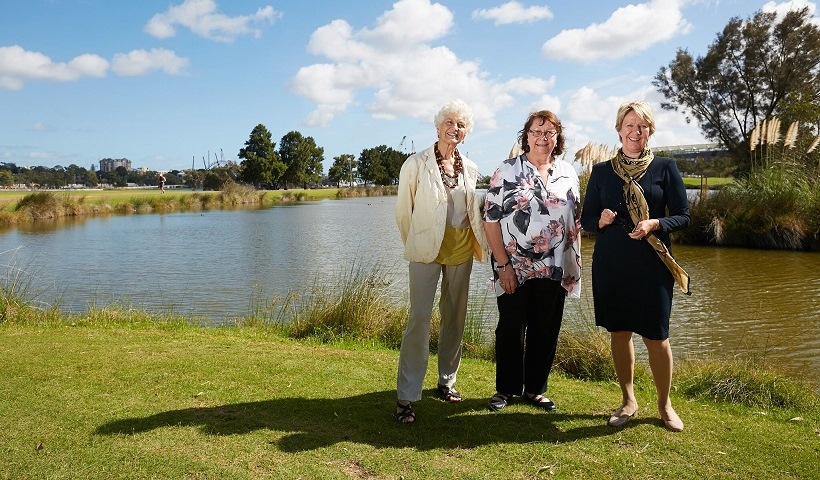
More Aboriginal midwives and culturally secure care in WA hospitals are critical to closing the gap in maternity care and childbirth outcomes for Aboriginal mothers and their babies.
A four-year study led by respected Murdoch University maternal health researchers has found that more Aboriginal midwives and culturally secure care in WA hospitals are critical to closing the gap in maternity care and childbirth outcomes for Aboriginal mothers and their babies.The NHMRC-funded partnerships study found that birthing on country, family support and providing an environment in which mothers felt comfortable to ask questions and empowered to make decisions were vital to maternal wellbeing.
Led by Murdoch’s Ngangk Yira Research Centre, the Birthing on Noongar Boodjar Project investigated the experiences of 39 Aboriginal women – almost half of whom first gave birth during adolescence.
Elders, midwives and midwifery educators from across the WA health system were also interviewed as part of the research, including those from a non-Aboriginal background. The project has been praised for the level of collaboration achieved across the WA maternal healthcare sector.
Aboriginal maternal and child health researcher Rhonda Marriott led the study, which found that some Aboriginal women did not encounter another Aboriginal person throughout their childbirth experience in metropolitan Perth and major regional centres.
Professor Marriott, Director of Ngangk Yira, said the findings highlighted the lack of access to high-quality, culturally secure maternity care for Aboriginal women.
“What’s clear from our research is that while nurses and midwives receive training to understand and respect cultural needs, there is evidence that Aboriginal women experience culturally unsafe care during their maternity journey,” Professor Marriott said.
“It’s time to strengthen efforts to establish honest and respectful relationships between health professionals and Aboriginal women. We need to understand what women want and ensure that they get the right maternity care, especially culturally rich birthing experiences in hospitals, and safer assisted births in the bush.
“The cultural needs of Aboriginal women are not always met or acknowledged once they reach the maternity wards of our hospitals. But the solutions are not complex. They only require a change in attitudes, some kindness and culturally secure maternity care – none of which add to the cost of ensuring high-quality maternity care services.
“More Aboriginal people need to be trained to address the disparities and provide culturally secure care and comfort for Aboriginal women giving birth on – and off – country.”
Birthing on country generally refers to an Aboriginal mother giving birth to her child on the lands of her or her partner’s ancestors, ensuring a spiritual connection to the land for her baby.
When a woman gives birth off country – away from ancestral home-lands – the belief is that it breaks the child’s spiritual place in the community raising emotional, social and spiritual issues for the mother and child.
Where birthing on country was not offered or supported in more remote areas, Professor Marriott said many women experiencing medical complications had to leave their families weeks before birth to wait in a regional centre.
“Some women will have concerns about leaving their family for up to six weeks, with practical and social worries around care for other children and possibly other adult dependants,” she said.
Many were often alone during their experience, with family members unable to be present to provide support.
All of the women interviewed reported having positive and supportive experiences; but just over half reported having had a negative experience at some point. Both Aboriginal women and practising midwives reported experiencing or witnessing racism or culturally unsafe practices.
There was also a deep sense of shame, with some women reporting being unable to ask questions or engage with midwives during their birthing experiences in urban and regional maternity wards, especially when women were alone or only had one family member with them.
Most preferred to give birth as close to home as possible because of the importance of having family – particularly other women, mother, aunts, grandmothers – around them.
The in-depth interviews with mothers, midwives and educators revealed that the importance of having family members present for birthing in line with cultural practices was not always well known or received by midwives and hospital staff.
Most Aboriginal women expressed the view that more Aboriginal midwives and hospital staff would have made their birthing experience less fearful and scary.
Professor Marriott said initiatives such as the Armadale Health Service’s Boodjari Yorgas family care program and the Moort Boodjari Mia service in partnership with St John of God Midland Public Hospital, had been designed to provide culturally secure antenatal services to Aboriginal women and families.
“There is evidence showing these services have been successful in improving antenatal and birth outcomes. However, more change is needed to ensure that experiences for all Aboriginal women in our maternity services change for the better,” she said.
The results of the research will be presented during a three-day symposium from April 9 to 11 at Burswood on Swan. Aboriginal women, researchers, including Professor Fiona Stanley, midwives and maternity workforce experts, including Janine Mohamed, CEO of CATSINaM will make further recommendations based on the project outcomes.
Partners in the BONB project: Department of Health’s Nursing and Midwifery Office; Aboriginal Health Policy Directorate; South Metropolitan Health Service; Women and Newborn Health Service, King Edward Memorial Hospital; North Metropolitan Health Service for Moort Boodjari Mia; Telethon Kids Institute; Pindi Pindi Research Centre; Derbal Yerrigan Health Service; St John of God Murdoch Healthcare; The University of Notre Dame Australia; the University of Kent; and the University of Saskatchewan.